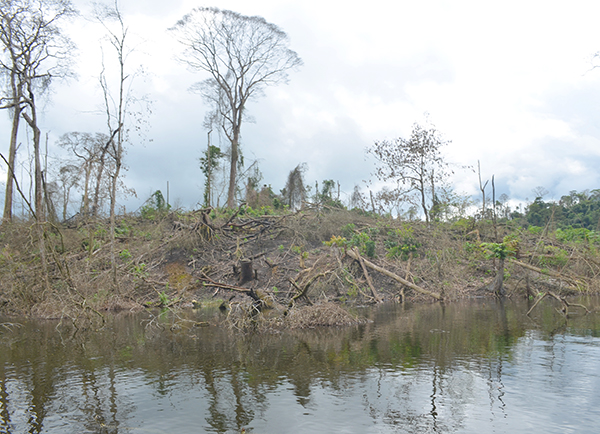CAMEROON, AFRICA
Lake Ossa
Lake Ossa is one of the largest lakes in Cameroon, with a surface area of about 4.000 ha. It is located approximately 50 km inland from the Gulf of Guinea and about 12 km west of the city Edea. The morphology of the lake is very complex, as the lake divides into four main parts. The maximum width of the lake is 7 km, the maximum depth is only 7 m during the rainy season. The lake is connected to the River Sanaga (the largest and longest river in Cameroon) by a 3 km long natural channel. The river discharge rate controls the water level and the water characteristics of the lake.
What makes it special
The apparent color and Secchi depth of the lake varies strongly with location and season. In the southeast, water is opaque and has a brown, muddy color due to the influence of the Sanaga River during the rainy season. Water in the north and west has a better visibility with a dark apparent color caused by its black muddy bottom.
Protection status
· A Habitat or Species Management Area - (IUCN Category IV)
· Wildlife Reserve – Lac Ossa

Biodiversity
Lake Ossa is home for many wildlife species. This includes manatees, freshwater turtles, crocodiles, monitor lizards, snakes and a huge variety of aquatic bird species. The African Manatee is the most charismatic species of the lake. Manatees feed mainly on macrophyte beds. The availability of macrophytes is strongly dependent on water levels of the lake. The lake is an important habitat for over 18 families of fish, dominated by Cichlidae and Mormyridae.

Local Communities
Many of the communities living around Lake Ossa rely on fish from its waters as their main source of protein and income.
Threats
The main threats are overfishing, poaching, bycatch, deforestation, erosion, sedimentation and eutrophication. Also the African Manatee is still being hunted.


